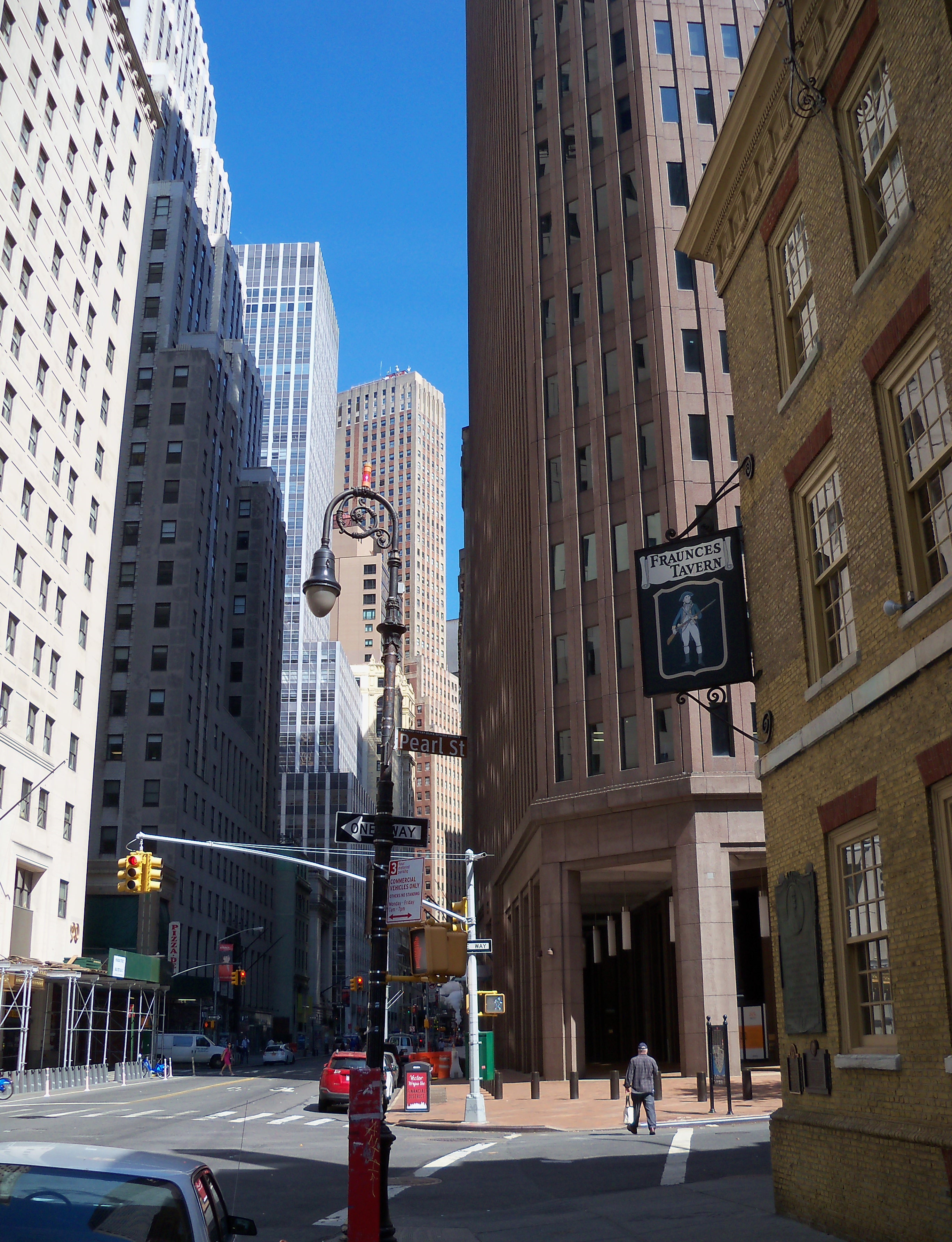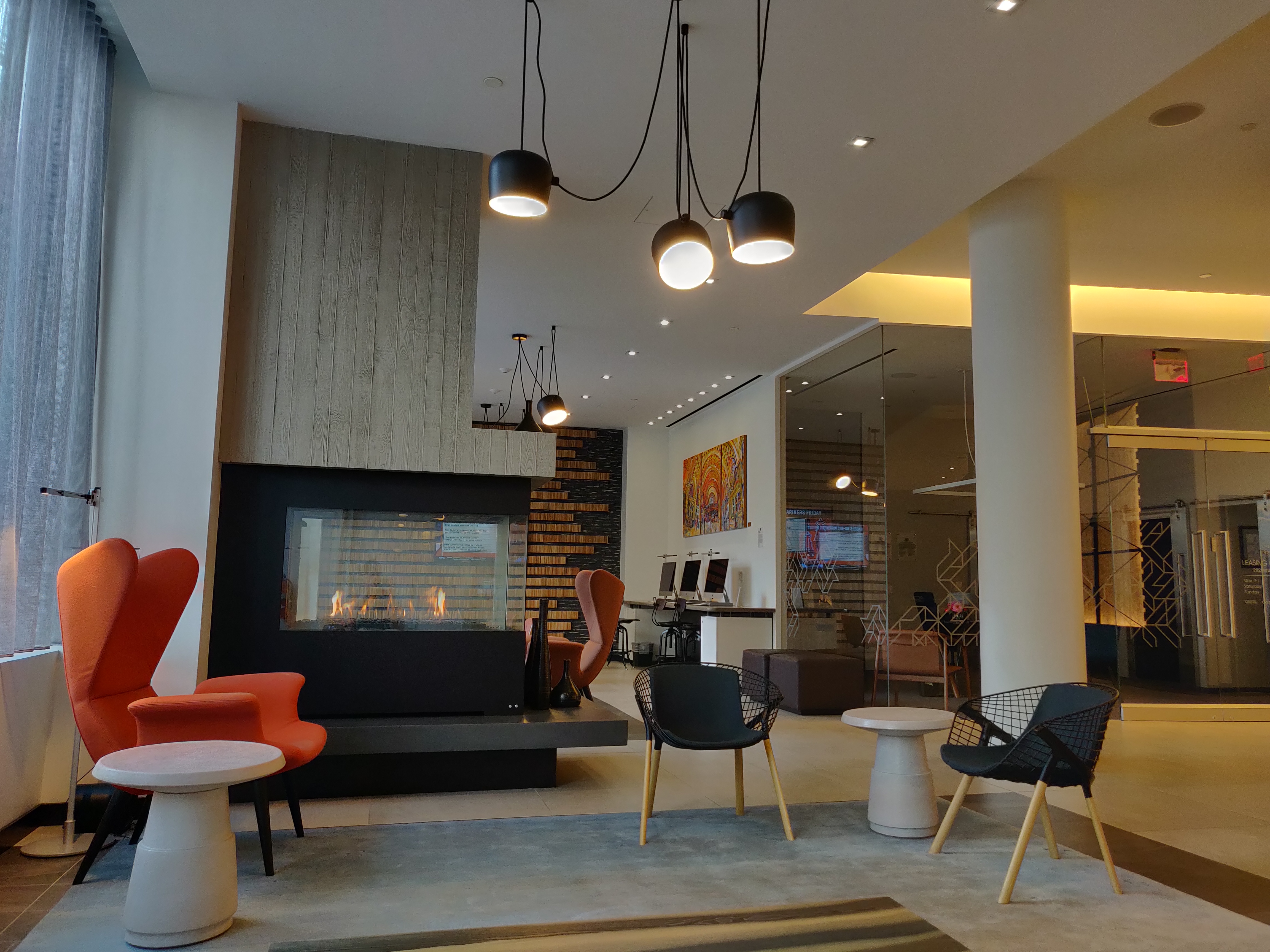|
30 Broad Street
The Continental Bank Building is a 50-story skyscraper at 30 Broad Street in the Financial District of Manhattan, New York City. It was completed in 1932 in the Art Deco style. It is next to the New York Stock Exchange Building. History Origins In 1929, a new 50-story building was announced at 30 Broad Street (location of the former 15-story Johnston Building) to house the Continental Bank and Trust Company and various brokers. The site extends along Broad Street at , the length of Exchange Place runs from New Street, and runs along New Street. The building site was once owned by the Dutch Reformed Church which had erected the city's second almshouse on the site before 1659. Architecture and construction The estimated cost of the new building was $20 million. The project was the largest single cooperative building venture undertaken to that time. Cross and Cross were announced as the building's planners. An "unusual" feature of the building was a sub-basement clearing h ... [...More Info...] [...Related Items...] OR: [Wikipedia] [Google] [Baidu] |
Broad Street (Manhattan)
Broad Street is a north–south street in the Financial District of Lower Manhattan in New York City. Originally the Broad Canal in New Amsterdam, it stretches from today's South Street to Wall Street. The canal drew its water from the East River, and was infilled in 1676 after numerous fruit and vegetable vendors made it difficult for boats to enter the canal. Early establishments on Broad Street in the 1600s included the Fraunces Tavern and the Royal Exchange. Later on the area became the center of financial activity, and all smaller buildings in turn were replaced with grand banks and stock exchange buildings. Most of the structures that stand today date from the turn of the 20th century, along with more modern buildings constructed after the 1950s. History 1600s: New Amsterdam canal Broad Street, formerly called ''Princess Graft'' in old New Amsterdam. Originally an inlet from the East River, the canal was flanked by two solid ranks of three-story houses, with paths in ... [...More Info...] [...Related Items...] OR: [Wikipedia] [Google] [Baidu] |
Dutch Reformed Church
The Dutch Reformed Church (, abbreviated NHK) was the largest Christian denomination in the Netherlands from the onset of the Protestant Reformation in the 16th century until 1930. It was the original denomination of the Dutch Royal Family and the foremost Protestant denomination until 2004. It was the larger of the two major Reformed denominations, after the Reformed Churches in the Netherlands (''Gereformeerde kerk'') was founded in 1892. It spread to the United States, South Africa, Indonesia, Sri Lanka, Brazil, and various other world regions through Dutch colonization. Allegiance to the Dutch Reformed Church was a common feature among Dutch immigrant communities around the world and became a crucial part of Afrikaner nationalism in South Africa. The Dutch Reformed Church was founded in 1571 during the Protestant Reformation in the Calvinist tradition, being shaped theologically by John Calvin, but also other major Reformed theologians. The church was influenced by vari ... [...More Info...] [...Related Items...] OR: [Wikipedia] [Google] [Baidu] |
Pearl And Broad - Panoramio
A pearl is a hard, glistening object produced within the soft tissue (specifically the mantle) of a living shelled mollusk or another animal, such as fossil conulariids. Just like the shell of a mollusk, a pearl is composed of calcium carbonate (mainly aragonite or a mixture of aragonite and calcite) in minute crystalline form, which has deposited in concentric layers. The ideal pearl is perfectly round and smooth, but many other shapes, known as baroque pearls, can occur. The finest quality of natural pearls have been highly valued as gemstones and objects of beauty for many centuries. Because of this, ''pearl'' has become a metaphor for something rare, fine, admirable and valuable. The most valuable pearls occur spontaneously in the wild, but are extremely rare. These wild pearls are referred to as ''natural'' pearls. ''Cultured'' or ''farmed'' pearls from pearl oysters and freshwater mussels make up the majority of those currently sold. Imitation pearls are also widely s ... [...More Info...] [...Related Items...] OR: [Wikipedia] [Google] [Baidu] |
Foundation (architecture)
In engineering, a foundation is the element of a structure which connects it to the ground, transferring loads from the structure to the ground. Foundations are generally considered either shallow or deep. Foundation engineering is the application of soil mechanics and rock mechanics ( geotechnical engineering) in the design of foundation elements of structures. Purpose Foundations provide the structure's stability from the ground: * To distribute the weight of the structure over a large area in order to avoid overloading the underlying soil (possibly causing unequal settlement). * To anchor the structure against natural forces including earthquakes, floods, droughts, frost heaves, tornadoes and wind. * To provide a level surface for construction. * To anchor the structure deeply into the ground, increasing its stability and preventing overloading. * To prevent lateral movements of the supported structure (in some cases). Requirements of a good foundation The design and the ... [...More Info...] [...Related Items...] OR: [Wikipedia] [Google] [Baidu] |
Lobby (room)
A lobby is a room in a building used for entry from the outside. Sometimes referred to as a foyer, reception area or an entrance hall, it is often a large room or complex of rooms (in a theatre, opera house, concert hall, showroom, cinema, etc.) adjacent to the auditorium. It may be a repose area for spectators, especially used before performance and during intermissions, but also as a place of celebrations or festivities after performance. Since the mid-1980s, there has been a growing trend to think of lobbies as more than just ways to get from the door to the elevator but instead as social spaces and places of commerce. Some research has even been done to develop scales to measure lobby atmosphere to improve hotel lobby design. Many office buildings, hotels and skyscrapers go to great lengths to decorate their lobbies to create the right impression and convey an image. [...More Info...] [...Related Items...] OR: [Wikipedia] [Google] [Baidu] |
Elevator
An elevator or lift is a wire rope, cable-assisted, hydraulic cylinder-assisted, or roller-track assisted machine that vertically transports people or freight between floors, levels, or deck (building), decks of a building, watercraft, vessel, or other structure. They are typically powered by electric motors that drive traction cables and counterweight systems such as a hoist (device), hoist, although some pump hydraulic fluid to raise a cylindrical piston like a hydraulic jack, jack. In agriculture and manufacturing, an elevator is any type of conveyor device used to lift materials in a continuous stream into bins or silos. Several types exist, such as the chain and bucket elevator, grain auger screw conveyor using the principle of Archimedes' screw, or the chain and paddles or forks of hay elevators. Languages other than English, such as Japanese, may refer to elevators by loanwords based on either ''elevator'' or ''lift''. Due to wheelchair access laws, elevators are ... [...More Info...] [...Related Items...] OR: [Wikipedia] [Google] [Baidu] |

.jpg)




